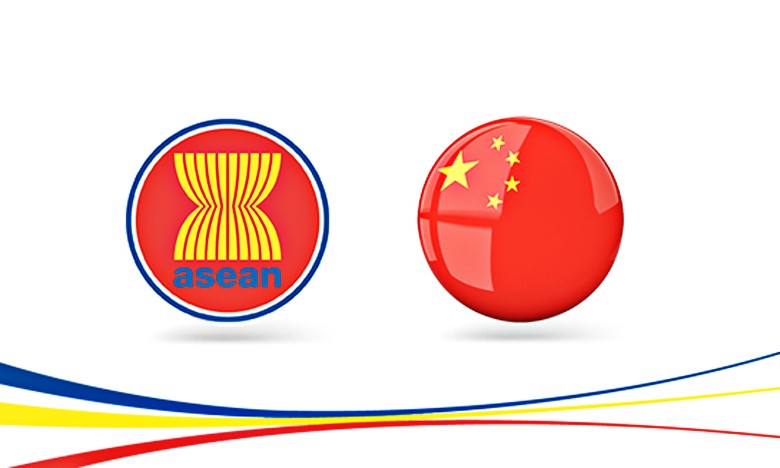
The Association of Southeast Asian Nations (ASEAN) wrapped up the 50th anniversary of its founding by finalizing a series of landmark agreements. Among them was the much-anticipated framework of a Code of Conduct (COC) in the South China Sea, which has been more than two decades in the making.
Early next year, the so-called Working Group Meeting on the Implementation of the DOC is set to meet in Vietnam in order to negotiate the contours and provisions of the final COC agreement. The Philippines will oversee the negotiation process as the new ASEAN-China country coordinator.
As the rotational chairman of the ASEAN, Philippine President Rodrigo Duterte hailed the progress in the negotiations of the COC as a crucial step towards de-escalating tensions in the region. The ASEAN and China also celebrated the successful testing of the newly-created Hotline to Manage Maritime Emergencies in the South China Sea mechanism among foreign ministries of respective claimant states.
Yet, upon closer examination, the diplomatic jubilation over the trajectory of COC negotiations rings hollow. There is neither a specific deadline over the finalization of a “substantive” final document, nor is there any indication that this would be a legally-binding agreement with real teeth. The ASEAN also fell short of directly criticizing China’s massive reclamation activities, accompanied by militarization of its artificially constructed islands, across the South China Sea basin.
There is growing concern that Beijing will, as it has over the past two decades, simply leverage the negotiations to provide a diplomatic cover for its unilateral and coercive alteration of the overall strategic landscape in the South China Sea. In the end, what is at stake isn’t just the rights of smaller claimant states, but also the ASEAN’s centrality in shaping the regional order.
Key Achievements
To be fair, the ASEAN made considerable strides in other areas of regional security concerns.
In light of the threat posed by Islamic State (IS)-affiliated elements, especially their months-long siege of southern Philippine city of Marawi, the regional body adopted (November 14) the Manila Declaration To Counter The Rise of Radicalization and Violent Extremism. The document calls upon member states to step up their cooperation in the realm of counter-terrorism through institutionalization of intelligence-sharing on the movement of, and financial transactions among, radical groups and suspected terrorists.
There are also hopes of regularizing multilateral maritime patrols by neighboring states of the Philippines, Malaysia, and Indonesia in their tri-border of the Sulu and Celebes seas, which have been infested by maritime piracy and terrorism. Better-endowed members such as Singapore have already offered surveillance equipment and advanced counter-terrorism training to frontline states such as the Philippines. External powers such as America, Russia, China, Japan, and Australia are expected to provide necessary assistance too.
The ASEAN also adopted the ASEAN Consensus on the Protection and Promotion of the Rights of Migrant Workers. The agreement aims to institute legal safeguards for migrant workers in the region, ensuring that they are given sufficient (if not fully equal) rights as citizens in terms of labor market rights. This is particularly crucial to labor-exporting regional states such as the Philippines, Indonesia and Cambodia, tens of thousands of citizens of which reside and work in wealthier member states such as Singapore, Malaysia, Thailand and Brunei.
Much to the delight of Washington and its allies, the ASEAN also took a tough line against North Korea. In its final joint statement this year, the regional body expressed its “grave concerns” over North Korea’s “provocative and threatening actions”, particularly its nuclear as well as ballistic missiles tests earlier this year. The Philippines has taken the lead in enforcing international sanctions against the reclusive regime by suspending all trade and financial transactions with Pyongyang. Malaysia, Vietnam, Singapore, and Myanmar also downgraded their ties accordingly. Yet, the ASEAN has also cautioned Washington against escalating the situation, calling instead for concerned parties to return to the negotiating table.
Since the collapse of Six Party Talks, the ASEAN Regional Forum (ARF) has served as the sole multilateral mechanism through which North Korea directly engages with its immediate neighborhood and the major powers of Russia, China and the United States.
China’s Carte Blanche
Yet, the ASEAN refused to confront China on its continued financial and trade exchanges with North Korea. Absent Beijing’s assistance, few experts believe that the heavily-sanctioned and isolated Pyongyang would have survived this long, nevermind developing an advanced ballistic and nuclear weapons capability that is threatening the whole region.
The ASEAN also missed a crucial opportunity to hold China to account over its increasingly disruptive maritime assertiveness, which threatens to fully drag in external powers such as America. The ASEAN meekly acquiesced to Beijing’s preference to continue a seemingly open-ended negotiation over a seemingly open-ended agreement.
In its joint statement, the regional body “took note of the improving relations between ASEAN” and enthusiastically welcomed “adoption of the framework of the Code of Conduct for the South China Sea (COC)” as a step towards “conclusion of a substantive and effective” final agreement.
As far back as 1996, the ASEAN, during 29th ASEAN Ministerial Meeting in Jakarta, called for the negotiation of a legally-binding COC, “which will lay the foundation for long-term stability in the area and foster understanding among claimant countries.” Three years later, the regional body formally sought China’s accession to such document, which would set the rules of the road for competing claimant states.
In 2002, China agreed to a largely symbolic arrangement with the ASEAN, namely the Declaration on the Conduct of Parties (DOC) in the South China Sea. Yet, the DOC was clearly meant to serve mainly as a prelude to an enforceable final pact, which would regulate the behavior of concerned parties in the disputed waters.
Fifteen years henceforth, the two sides only managed to agree on a framework, the outline of which suggests another merely symbolic document in the making. Based on the agreed-upon outline, the final COC would not serve as “an instrument to settle territorial disputes or maritime delimitation issues.” Far from a legally binding pact, it would simply be anchored by “a set of norms” (rather than clearly-defined laws) to foster cooperation and amity among competing claimant states.
Thus, the envisioned COC increasingly looks like a repackaged DOC without any clear added value for the ASEAN claimant states. To China, however, the negotiations allow it to project a veneer of congeniality and peacefulness despite its unilateral actions on the ground. It also allows China to gradually sideline, if not bury, the Philippines’ arbitration award in the South China Sea, which nullified the bulk of Beijing’s expansive claims across the area.
Likely, China will present any final document, no matter how anodyne and inconsequential, as the primary quasi-legal reference -- rather than international law or, more specifically, the Philippines’ arbitration award in accordance to the United Nationals Convention on the Law of the Sea -- for addressing the disputes.
Emboldened by the regional body’s acquiescence, China has even set preconditions for negotiation of a final COC, namely that “there is no major disruption from outside parties.” In effect, Beijing is gradually demanding ASEAN claimant states downgrade their maritime security ties with America and other key allies, such as Japan, in the area.
As Duterte said after his early-November meeting with Chinese President Xi Jinping on the sidelines of the Asia Pacific Economic Cooperation Summit (APEC), the South China Sea disputes are “better left untouched” by external powers.
Under the Filipino president’s watch, the ASEAN lost a great opportunity to assert its centrality in shaping the trajectory of regional maritime disputes in accordance to the interest of its members as well as principles of international law.



